Surfers around the world will often agree that the best surf spots on the planet have already been discovered. Unfortunately, the fate of many of these destinations, even the hard to reach, is that they become watered down by surf tourism and commercialization. Given this inevitable trajectory, to find oneself in an essentially undiscovered surf spot, and to be privy to the birth of its surf culture, is a true rarity.
My partner and I recently had the pleasure of traveling to one such emergent surf treasure, in the coastal West African waters of Dakar, Senegal. We realized immediately that this might have been the first and the last time we experienced such a novelty in either of our lifetimes.
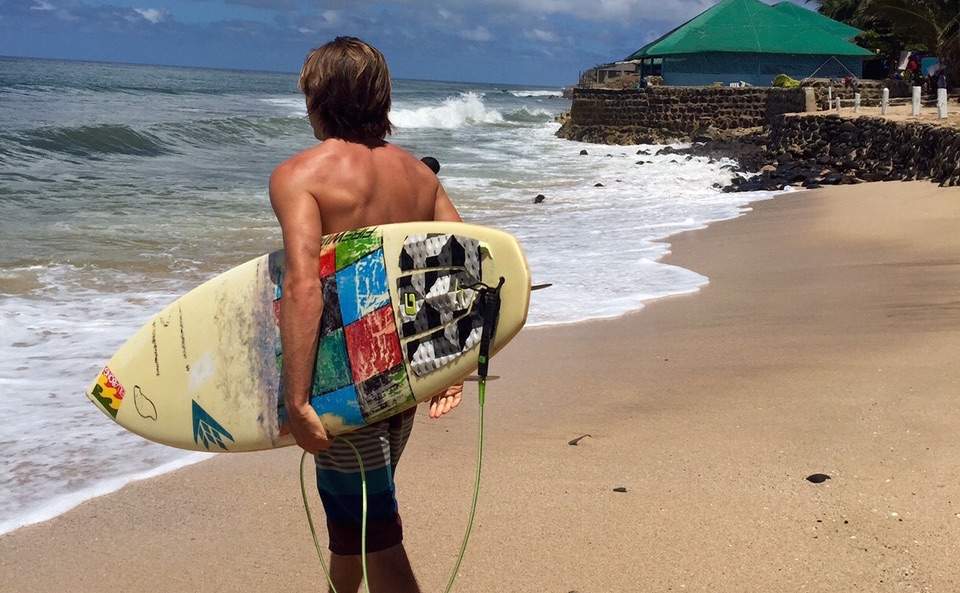
Although Dakar may seem an obscure place for a surf destination, any die-hard surfer will likely recognize the location from its debut-to-western-eyes in the 1966 classic surf film,
Endless Summer. In the first scene of the film, two Californian surfers set out on a global journey to find the best waves in the world, chasing a proverbial ‘endless summer’. As the film opens, the golden boys, clad in two-piece suits with surfboards in hand, board a plane en route to Dakar, Senegal. For many young Americans watching the film for the first time, the boys may as well have been traveling to the moon to catch waves.
In the scenes following, the two men surfed what is now considered to be the best surf spot on the West African coastline, known as “N’Gor Rights”. The name describes the spot aptly: A right-breaking point break on the south side of N’Gor Island, which is a 5-minute boat ride from mainland Dakar. As Africa’s western most point, Dakar is a peninsula that catches most of the Atlantic swell coming from various directions. This bodes well for solid year-round surf, major waves coming in the winter months, and, as we discovered, plenty of swell surging in throughout the summer as well.
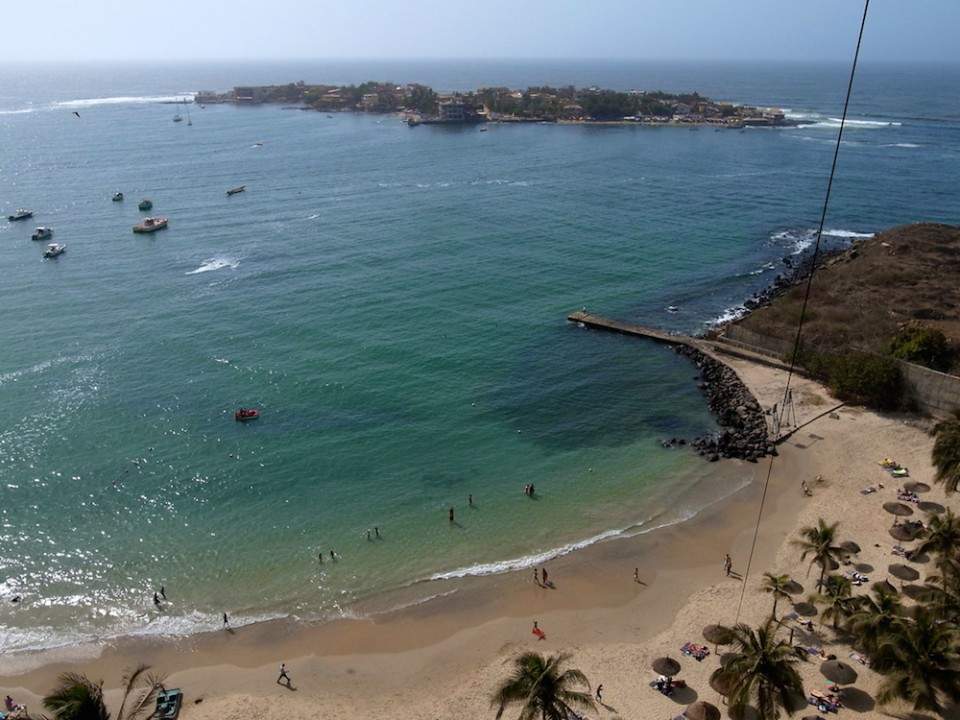
As the locals themselves confirmed, we found Dakar to be in its first generation of surfers – that is, the oldest among them being around 40 years old. What this means for the surf culture is that the waters are un-crowded, the locals are not yet jaded, or fed up with surf tourists, and the vibe between locals and visiting surfers is friendly, welcoming, and curious. Not once did we get the feeling of territorialism in the water that can be found on the California coastline, our home turf. Dakar reminded us of what true surf culture really is – or should be – or once was in Western countries.
“…for those willing to navigate relatively unmapped territory and endure the inevitable discomforts of travel in a developing nation, Dakar is a highly recommended surf destination.”
Thus, for those willing to navigate relatively unmapped territory and endure the inevitable discomforts of travel in a developing nation, Dakar is a highly recommended surf destination. Below I’ve included great information on the best surf spots we found in Dakar, where to rent boards, who to talk to, and when to go. Also included are a few travel tips highlighting unique characteristics of the city that will help make for a great trip, whether surfing or not.
Malika Surf Camp at Yoff Beach
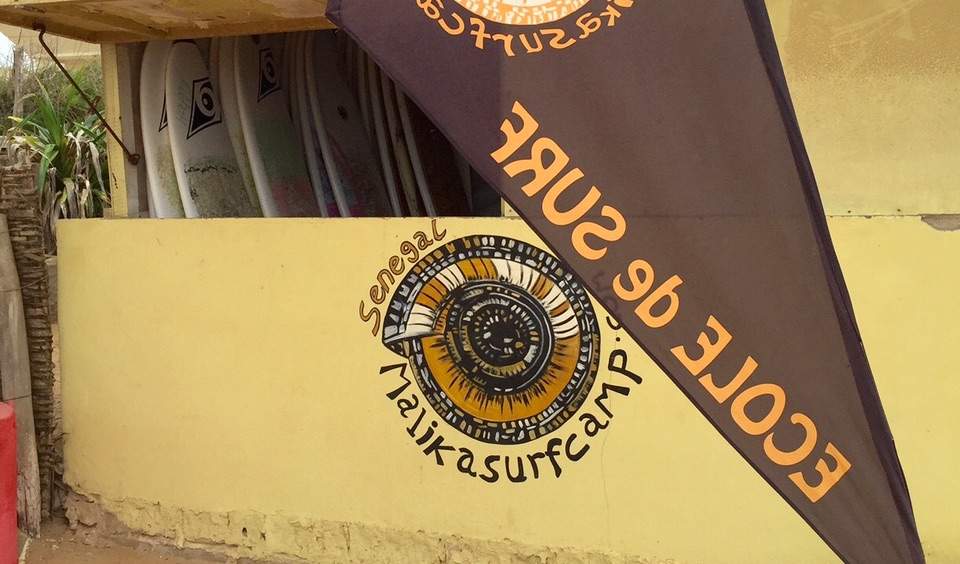
Our first surf experience in Dakar was at a well-known spot on the southern side of Dakar, called Yoff Beach. Yoff is an expansive sandy beach populated by small palapas for rent (approximately $5 a day). The beach is also sprinkled with pop-up style restaurants with plastic tables and chairs, where you can eat fresh-caught whole fish smoked on the grill while sipping on various carbonated drinks, that emerge from a camping cooler upon request.
The palapas are owned by various establishments, allowing you to set up shop and be ensured of the security of your belongings while you surf. We rented boards from what may be Dakar’s best-known surf camp and rental shop, Malika Surf Camp, owned and operated by a local couple. They have a decent board selection and offer lessons if you want them, as well as extra gear like rash guards and surf wax for free. We learned that they also offer the occasional yoga-for-surfers yoga class.
N’Gor Rights
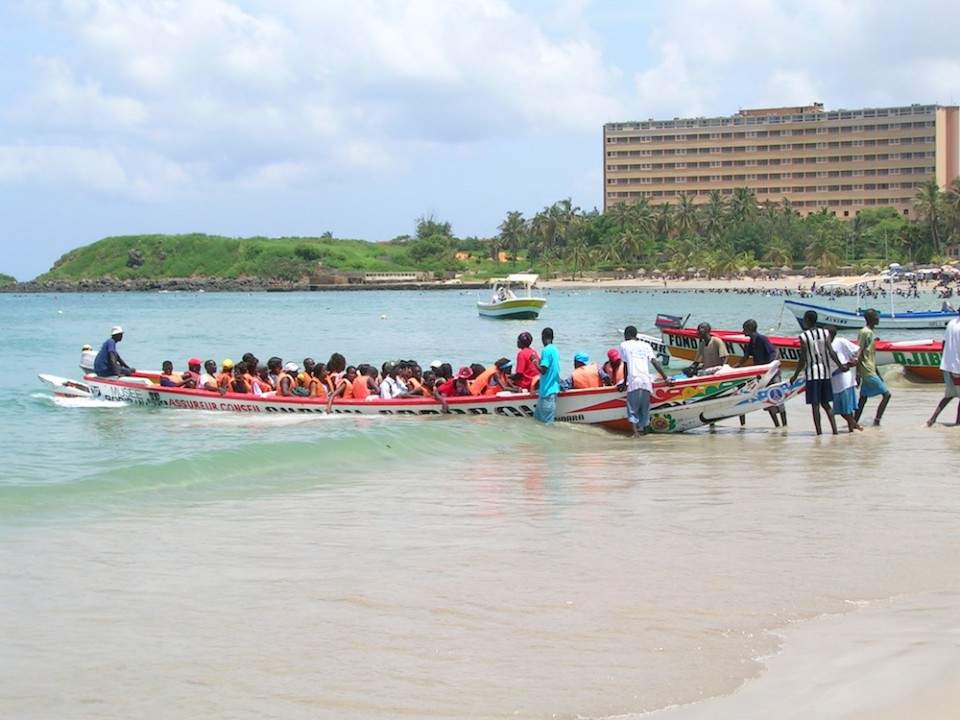
Located a half mile off the mainland, the famous N’Gor Island can be reached via a five-minute ride in a “pirogue” (traditional Senegalese fishing boat), the boats running about every half hour all day long. In the summer months, the small patches of beach on the island get packed with Senegalese tourists from about 2pm- 8pm.
The island is home to a handful of artists and surfers and is a popular tourist destination for locals and foreigners alike. Boards can be rented from N’Gor Island Surf Camp which is easy to find due to the small size of the island; ask anyone working at the beachside palapas or food stalls which direction to head. You can also look them up online and call ahead – they have English speaking staff members available.
There are technically two surf spots on the island: the famous N’Gor Rights, which is a point break and considered a more advanced spot, mostly because of the rocky bottom and equally rocky coastline. The second spot is “N’Gor Left” which is likewise, a left-breaking point break on the other side of the island that locals say is similarly awesome, however, less consistent. The two breaks are within 10 minutes of each other.
Secret Spot in Almedies
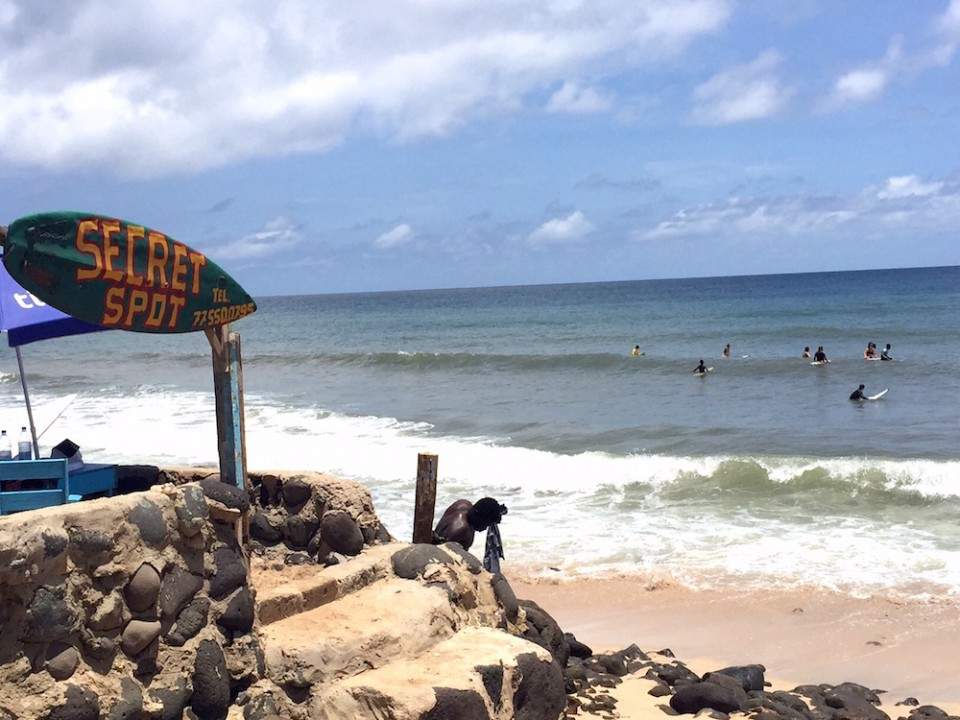
Located on the north side of Dakar, this is a sweet little gem of a surf spot that is not exactly “secret” and is fairly easy to find if you get directions to the Almedies neighborhood, which is a cool area of the coast that is marked by seaside restaurants and upscale expat housing.
This is a more advanced spot, a beach break, and you’ll find rougher waters on this side of Dakar in general. We learned a lot about the local surf culture from hanging out at Secret Spot with a small crew of the first-generation Senegalese surfers who run the surf shop at Secret.
Babacar’s Surf Rentals
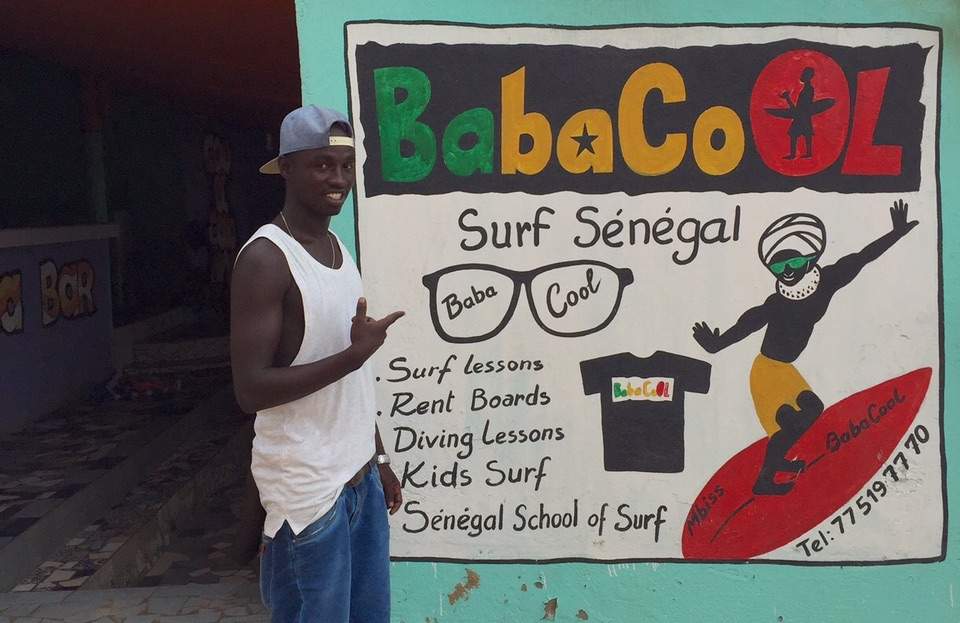
This is a sweet spot to hang out, meet locals, have a cold drink and perhaps play a game of pool in between surf sessions. It is not the best surf spot in Dakar, due to its location and rockier beach but it IS a hopping community hub and a sure bet for some of the best beachside parties in the area.
This reputation is earned in large part by the bright character and sweat equity of the man behind the curtain, a young 30-something named Babacar – A.K.A “BabaCool”. This man is a pillar in his community, and with his father, co-owns “Babacar Surf School.”
“This is a sweet spot to hang out, meet locals, have a cold drink and perhaps play a game of pool in between surf sessions.”
Babacar recently emerged from a 10-year legal battle over the right to keep the family business alive. What began as an attempted land grab from a neighboring foreign hotel owner looking to expand his holdings, snowballed into the community’s fight to prevent the privatization of the Dakar’s public beaches. The battle entailed multiple city-wide petitions, and a temporary incarceration of Babacar’s father. During the time his father was in jail, Babacar enrolled in business school to learn the ins and outs of Senegalese business law so that he could represent himself in court.
Eventually, the people were victorious in keeping the land, and so the community gathering place lives on. It is definitely worth your time to visit this surf spot, rent a board and trade stories with “Babacool” for an afternoon.
Basic Travel Tips for Dakar
Keeping a low profile is relatively easy
We had it easy as foreigners in this trip, due in large part to the fact that we were staying with a family member of mine who has lived there for almost two years. But despite this, I can count only a handful of times when we felt hassled or singled out by locals. Perhaps because of the infrequency of foreign tourists since the Ebola scare, locals seemed to be welcoming to foreigners, if not a bit indifferent to us.
Life starts and ends much later in Dakar
Particularly in the summer months when the heat and humidity can be quite intense, people won’t really begin emerging from the home until the second part of the day. Indeed, the beaches never populated until around 2 or 3pm and stayed packed until well after sundown.
We also learned that nightlife in Dakar begins around midnight (at the earliest), and finding music or clubbing before 2am is nearly impossible. This means that the clubs are open ALL night long, into the morning hours. A night out in Dakar ends with breakfast.
The national language is French
As a former French colony, be prepared for everyone to be speaking, or to be able to speak, French. Many locals also speak their own tribal languages, the most common being
Wolof, which belongs to the Senegambian branch of the Niger-Congo language family. If you don’t speak French, you can fumble your way through with basic English and good body language. However, fluent English speakers are becoming increasingly common.
Whether or not you are a surfer prepared to travel the far corners of the earth in search of unique surf locations, Dakar is a city to see, taste and feel. As for us, we returned to the states with a few great surf stories and an appreciation for having witnessed Senegal’s sub-culture that is sure to grow and change quickly in the coming decades. We were grateful for the reminder of the core values that surfers all over the world are united by, born simply of a love for the sport.
Check out the following articles and resources to help plan surf trip:
Photo credits: sw_photo , all other photos courtesy of Chantal Peterson, please don’t reuse them without permission.





